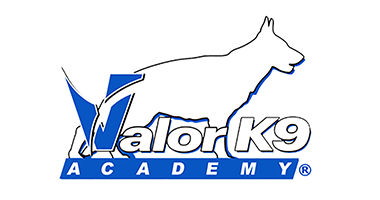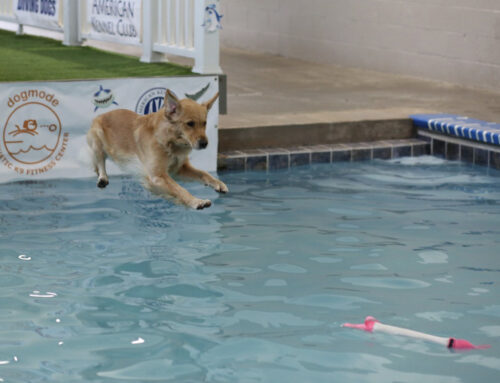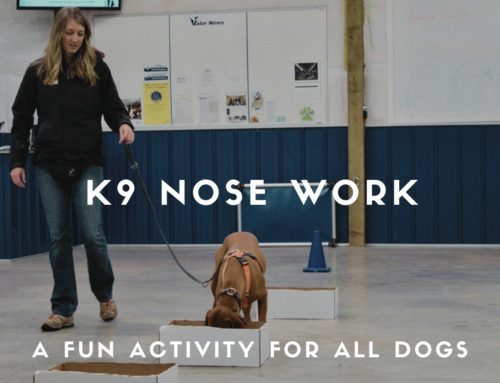By: Trainer Maria Fell
The history of dog agility training
Agility began in the 1970’s and has become an increasingly popular dog sport. Interestingly, agility began as a place-filler and crowd-pleaser in the UK during dog shows. Coordinators felt a need to fill the gap between Obedience and Breed competitions to keep the audience occupied. The task was brought to a man by the name of Peter Meanwell. Being involved with the horse world and familiar with show jumping, Maxwell came up with the idea of using a jump course. He thought there might be potential in merging the equine sport into the dog world.
After some discussion with fellow canine experts, they established a reasonable course that would be safe for the dogs. They used jumps that would be an appropriate size for whichever dog was running. Spectators loved the event. The initial idea of crowd-pleasing entertainment quickly grew into an exciting competition. Agility has evolved into a fast-paced, timed competition. It involves obstacles such as jumps, tunnels, weave poles, A-frames, and teeter-totters.
Why agility is so popular
Agility has become popular for many reasons. The running, jumping, and climbing offer a great outlet for a dog’s energy. Handlers also enjoy the physical fitness perks that come along with working their dog on an agility course. Aside from the physical aspect, there is also a great mental benefit to agility. Dogs who are lacking in confidence or nervous can build their confidence through agility. Agility is a great training tool!
Which breeds can do agility?
Breeds of any kind are able to compete in agility. However, the most common breeds used include those quick & agile working breeds. These include Border Collies, Shelties, Golden Retrievers, as well as smaller breeds such as Papillons. According to an article on the AKC website, these breeds excel in agility because of their athletic ability as well as the connection to their handler. Some working breeds may be capable of agility – such as terriers – but they were bred to work independently, thus making them less likely to successfully work through a course with their handler.
Is it easy?
Training a dog to compete in agility can be complicated. The best way to approach training is with positive reinforcement, using food, treats, or toys to entice the dog through the obstacles. Starting slow is best. Setting a good foundation and not rushing too quickly will prevent causing confusion to the dog. There are specifications for the obstacles that a handler must be aware of in order to run a successful course. For example, the Dog Walk and the Seesaw require the dog to remain on the obstacle – and not jump off – throughout the area deemed the “contact zone.” Additionally, the jumps may not be knocked over, or a penalty will be incurred.
Tell me about competitions!
Once training has commenced, competition can begin to be considered. There are three types of agility trials: All-breed, Specialty, and Group. Eligibility requirements to compete in AKC trials include a minimum age of 15 months, registered with the AKC (or under the AKC Indefinite Listing Privilege program), spayed or neutered, clean bill of health and updated vaccinations.
There are several levels in competition. Some examples are Novice (A and B), Open, Excellent, Master, and Premier. There are additional classes as well, with scoring being different in each. The higher levels of competition may require fewer faults. There are numerous titles that are awarded to qualifying dogs, with set qualifications to achieve each title. Most of which require 3 qualifying scores to obtain the title.
The organizations that facilitate agility competitions include the American Kennel Club (AKC), Canine Performance Events (CPE), United States Dog Agility Association, Inc. (USDAA), United Kennel Club (UKC), and North American Dog Agility Council (NADAC). The most prevalent of these organizations would be the AKC competitions. Each of these organizations has different titling requirements and scoring processes, though the obstacles are generally the same.
Spokane dog agility classes
In the Spokane area, there are a handful of agility clubs and trainers. The Spokane Agility Club (https://www.spokaneagilityclub.org/) offers trials, though there are not any upcoming events listed in the calendar. The most recent event recorded was from October 2020. Spokane Dog Training Club (spokanedtc.org), located in Deer Park, offers agility trials as well, with past trials scheduled in August 2020. Unfortunately, there do not appear to be any active/upcoming agility trials. This may be due to the season (winter) and/or due to COVID restrictions.
Let’s see some agility!
YouTube offers a wide array of agility videos – from training to competition!
Best of the Agility competition from the 2020 Westminster Kennel Club Dog show | FOX SPORTS – YouTube
Large Dog Agility 1st Place – Incredible Dog Challenge 2015 Huntington Beach, CA – YouTube
How to get started in Dog Agility | Dog Tips and Tricks – YouTube
Sources
- Agility: Get Started – American Kennel Club
- Dog Agility 101: How Do Dog Agility Competitions Work?
- Spokane Dog Training Club
- Spokane Agility Club
- Founding History
- Which Breeds Excel in Agility? – American Kennel Club
- REAGIL.pdf (akc.org)
- The AKC, USDAA, UKC, NADAC dog agility organizations | Affordable Agility
This article was written by Trainer Maria Fell of Valor K9 Academy – Spokane. (Thank you, Maria!)








Leave A Comment